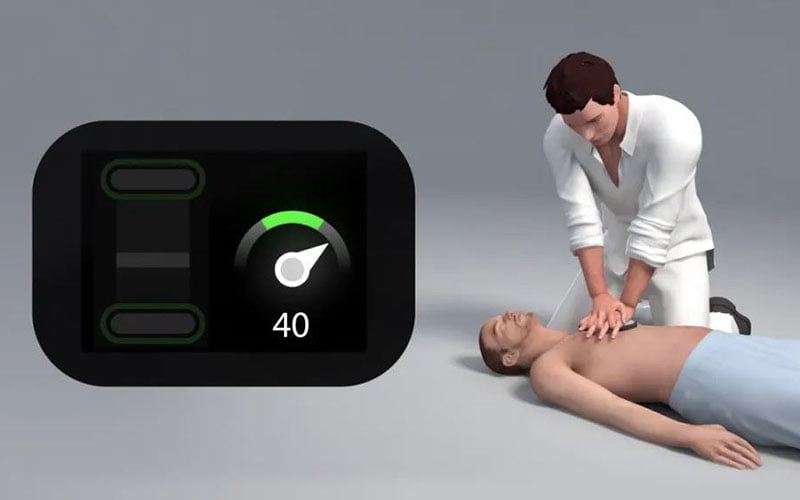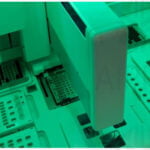
In the world of emergency medical care, the ability to perform high-quality chest compressions during cardiopulmonary resuscitation (CPR) can make all the difference between life and death. However, it is often challenging for healthcare providers and first responders to accurately gauge the effectiveness of their chest compressions in real-time. That’s where the chest compression feedback device monitor comes into play.
A chest compression feedback device monitor is an innovative technological tool designed to provide real-time feedback on the quality of chest compressions during CPR. This device is typically placed on the patient’s chest and utilizes advanced sensors and algorithms to analyze the depth, rate, and recoil of each compression. By providing immediate feedback, the device enables healthcare providers to make necessary adjustments and deliver more effective chest compressions.
Effective chest compressions are a critical component of successful CPR. When performed correctly, they help circulate oxygenated blood to vital organs, maintaining a minimal level of blood flow until advanced medical care can be administered. High-quality chest compressions involve achieving an adequate depth, maintaining an appropriate rate, allowing for complete chest recoil, and minimizing interruptions in compressions.
Chest compression feedback device monitors employ advanced technology to accurately assess the quality of chest compressions. These devices typically utilize sensors that measure the depth and rate of compressions and provide real-time visual and auditory feedback to the user. The feedback can be in the form of LED lights, graphical displays, or voice prompts. This immediate feedback allows healthcare providers to adjust their technique and optimize the delivery of chest compressions.
One of the key advantages of using this device is the ability to receive real-time feedback during CPR. Traditionally, healthcare providers had to rely on subjective assessments or delayed feedback after the resuscitation attempt. With the device monitor, they can make instant adjustments to improve the quality of chest compressions, ultimately increasing the chances of a positive patient outcome.
CPR training is crucial for healthcare professionals and first responders. Chest compression feedback device monitors serve as valuable tools in training sessions, additionally it allow learners to visualize and understand the correct technique for performing high-quality chest compressions. By providing immediate feedback on compression depth, rate, and recoil, these devices also help learners refine their skills and build confidence in their ability to deliver effective CPR.
The use of chest compression feedback device monitors promotes standardization in CPR performance. By providing objective and consistent feedback, these devices ensure that healthcare providers adhere to the recommended guidelines for chest compressions. This standardization helps improve the overall quality of CPR delivery across different providers and settings, leading to better patient outcomes.
Chest compression feedback device monitors also play a crucial role in quality assurance and documentation. The data collected by these devices can be recorded and analyzed, allowing healthcare organizations to assess the performance of their providers during CPR interventions. This data-driven approach enables targeted training and ongoing quality improvement initiatives to enhance patient care.
A1: The purpose of this device is to provide real-time feedback on the quality of chest compressions during CPR. It also helps healthcare providers and first responders optimize their technique and improve patient outcomes.
A2: Chest compression feedback device monitors utilize advanced sensors and algorithms to measure the depth, rate, and recoil of chest compressions. Also device provides immediate feedback through visual and auditory cues, enabling users to make adjustments and deliver more effective compressions.
A3: Yes, chest compression feedback device monitors are valuable training tools. They allow learners to visualize and understand the correct technique for performing high-quality chest compressions. The real-time feedback helps learners refine their skills and build confidence in their ability to deliver effective CPR.
A4: Yes, CPR outcomes improve with this device. These devices enhance the quality of chest compressions and increase the chances of a positive patient outcome.
A5: Yes, chest compression feedback device monitors are becoming increasingly available in healthcare settings and CPR training programs. The growing recognition of their benefits has led to their adoption as essential tools for improving CPR quality.
A6: Healthcare organizations can benefit from using chest compression feedback device monitors in several ways. These devices promote standardization, enhance training and skill development, facilitate quality assurance and documentation, and also contribute to ongoing quality improvement initiatives.
The chest compression feedback device monitor is a game-changer in the field of CPR training and delivery. These devices empower healthcare providers and first responders to optimize their technique and improve patient outcomes. With the ability to enhance training, promote standardization, and contribute to ongoing quality improvement efforts, chest compression feedback device monitors are revolutionizing the way CPR is performed and taught.
Recommended other topics: Achieve Medical Weightloss: Your Path to a Healthier You










© InfoDoot. All Rights Reserved.